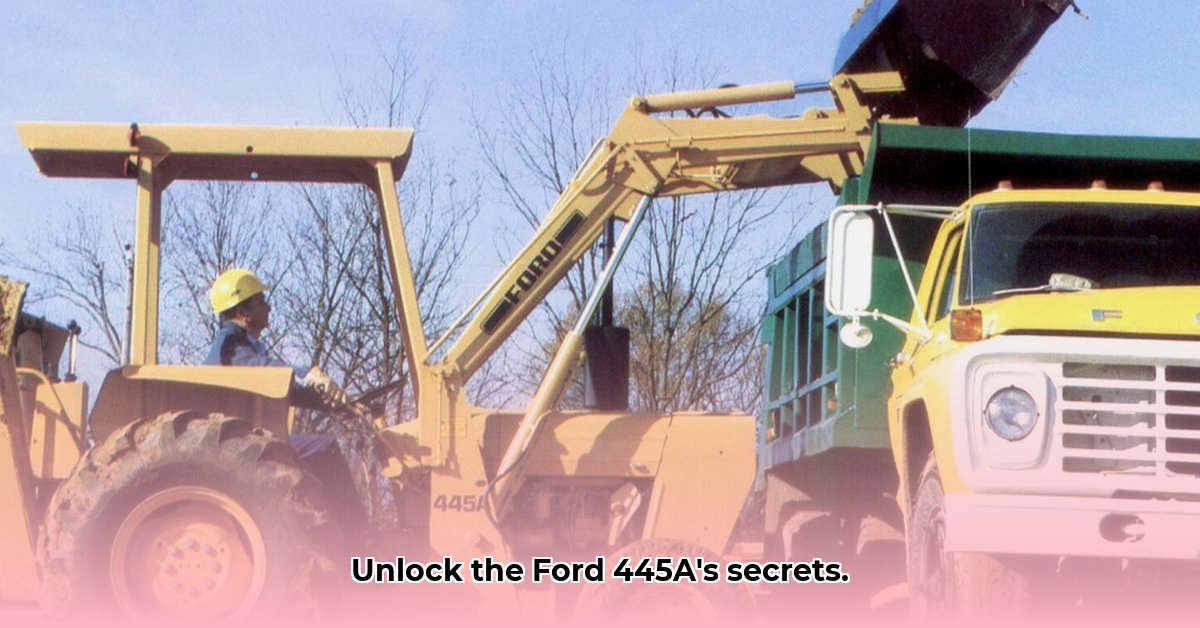
Ford 445 vs. 445A: A Comparative Review
Thinking about purchasing a used Ford 445 or 445A tractor? This comparative review delves into the key differences between these workhorses, providing essential information for prospective buyers, collectors, and enthusiasts. We'll examine specifications, historical context, potential maintenance issues, and offer actionable advice to help you make an informed decision.
For more Ford tractor information, check out this helpful resource: Ford Tractor Info.
Are you ready to navigate the world of vintage Ford tractors and find the perfect fit for your needs? Let's begin!
Understanding the Ford 445 and 445A Lineage
The Ford 445A didn't emerge in isolation; it's a direct descendant of the Ford 445, a reliable tractor produced between 1979 and 1983. Both models are renowned for their robust build and dependable performance. The 445A, however, represents an evolution, incorporating improvements based on user feedback and technological advancements. It's essentially a refined and slightly more powerful version of its predecessor.
But what specific enhancements distinguish the 445A? Let's explore the key differences.
Key Differences: Ford 445 vs. Ford 445A
The most noticeable difference lies in horsepower. Both tractors utilize three-cylinder diesel engines, but the 445A boasts a slight increase in claimed horsepower – approximately 48 hp compared to the 445's approximately 47 hp. This seemingly small difference translates to enhanced pulling power and smoother overall operation. Beyond horsepower, subtle refinements in hydraulic capacity and a greater selection of optional features are often found on 445A models. Additionally, safety features improved over time. Many 445A models offered enhanced Rollover Protective Structures (ROPS) options, reflecting evolving industry safety standards.
Here's a summarized comparison:
| Feature | Ford 445 (1979-1983) | Ford 445A Tractor (1984-1988) |
|---|---|---|
| Engine Horsepower (Claimed) | Approximately 47 hp | Approximately 48 hp |
| Transmission Options | 6-speed, 8-speed, and 4-speed torque converter | Similar options; precise details vary by model |
| Hydraulic Capacity | 8.5 to 22 gallons (depending on configuration) | 8.5 to 22 gallons (depending on configuration) |
| ROPS | Two-post standard; four-post available as option | Two-post standard; four-post and high-clearance options available |
Buying a Ford 445 or 445A: A Practical Guide
Before making a purchase, ask yourself these crucial questions:
- Define Your Needs: What tasks will the tractor perform? This dictates essential features.
- Budgeting: Establish a realistic budget, encompassing potential repair and maintenance costs. Older tractors may require some attention.
- Thorough Inspection: A pre-purchase inspection by a qualified mechanic is strongly recommended. Check for wear, leaks, and mechanical issues.
- Parts Availability: Research parts suppliers before purchasing, as sourcing parts for older tractors can be challenging.
Weighing the Pros and Cons
Advantages:
- Durability: Both models are known for robust construction and potential for a long lifespan.
- Versatility: Suitable for a wide array of agricultural tasks and implements.
- Relatively Simple Mechanics: Simpler to maintain and repair compared to modern tractors.
Disadvantages:
- Parts Availability: Sourcing parts can be more time-consuming and expensive.
- Age-Related Issues: Increased risk of wear and tear compared to newer machines.
- Power Limitations: Power output may be insufficient for some demanding applications.
Transmission and Maintenance: A Deeper Dive
The Ford 445 and 445A, while visually similar, have key transmission differences that affect maintenance. While both employ manual transmissions, certain 445A models featured upgraded gear ratios or reinforced components, impacting longevity. The exact specifications vary by model year, requiring detailed research.
Maintenance costs depend on usage, preventative maintenance, and parts availability. While common parts are readily accessible, specialized components, particularly for the hydraulic system and three-point hitch, can be expensive and difficult to source. Online forums like MyTractorForum 1 prove invaluable for locating parts and advice.
Three Pivotal Points to Consider:
- The 445A offers a slight horsepower advantage over the 445, resulting in improved performance.
- Maintenance costs can vary significantly depending on the transmission type and parts availability. Online forums are essential resources.
- Regular inspections, particularly of the three-point hitch system, are crucial for preventing costly repairs.
Conclusion: Making the Right Choice
The Ford 445 and 445A represent a legacy of dependable farm machinery. Thorough research, a comprehensive inspection, and realistic expectations are paramount when deciding which tractor—or if either—is the right fit for your needs. Remember that diligent preventative maintenance will significantly extend the lifespan of your chosen tractor and minimize potential repair headaches down the road.